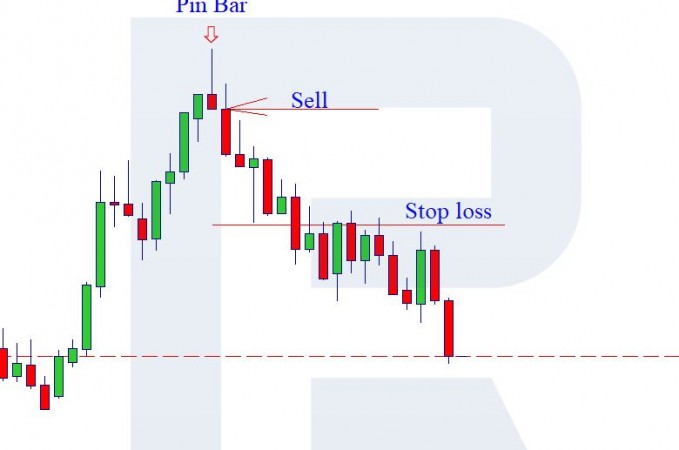
Trading in financial markets can be both rewarding and challenging. As a trader, one must navigate through a sea of uncertainties and volatility. Risk management is a crucial aspect of trading that can make a significant difference between success and failure. In this article, we will explore how to set up stop-loss and take-profit orders to better manage risk while trading.
Understanding Stop-Loss and Take-Profit Orders
What are Stop-Loss Orders?
A stop-loss order is a risk management tool used by traders to limit potential losses on a trade. It allows traders to preset a specific price level at which their positions will automatically be sold if the market moves against them. By doing so, traders can protect their capital from excessive losses.
What are Take-Profit Orders?
Take-profit orders are the opposite of stop-loss orders. They allow traders to lock in profits by setting a predetermined price level at which their positions will be automatically sold. Take-profit orders help traders avoid the temptation of holding onto winning positions for too long, which can expose them to potential market reversals.
The Importance of Risk Management in Trading
Effective risk management is the cornerstone of successful trading. It helps traders preserve their capital, maintain discipline, and stay in the game for the long term. Without proper risk management, traders can easily fall victim to emotional decision-making, leading to significant losses.
Setting Up Stop-Loss Orders
Choosing the Right Stop-Loss Level
Setting the appropriate stop-loss level is crucial. Placing it too close to the entry price may result in premature stop-outs, while placing it too far may expose the trade to unnecessary risks. Traders must consider market volatility and the specific asset being traded when determining the stop-loss level.
Setting Stop-Loss Based on Technical Analysis
Technical analysis plays a vital role in setting stop-loss levels. Traders often use support and resistance levels, moving averages, and other technical indicators to identify potential stop-loss points.
Using Trailing Stop-Loss Orders
Trailing stop-loss orders can be beneficial in letting winning trades run while protecting profits. It involves adjusting the stop-loss level as the trade moves in the trader's favor, thus "locking in" profits if the market suddenly reverses.
Implementing Take-Profit Orders
Setting Realistic Profit Targets
Setting realistic profit targets is essential for successful trading. Greed and overambitious profit expectations can lead to disappointment and missed opportunities. Traders should analyze market conditions and set take-profit levels based on sound judgment.
Using Technical Analysis for Take-Profit Levels
Similar to setting stop-loss levels, technical analysis can aid in determining appropriate take-profit levels. Traders can use chart patterns, Fibonacci retracements, and other technical tools to identify potential points of resistance or reversal.
Stop-Loss and Take-Profit Strategies for Different Markets
Different financial markets may require tailored stop-loss and take-profit strategies. The approach that works in the forex market may not be suitable for stocks or cryptocurrencies.
Forex Market
In the forex market, where currencies are traded, traders often face high volatility and intraday price fluctuations. Traders must set wider stop-loss levels to account for these fluctuations, but they should also be cautious not to set them too wide to avoid excessive risk.
Stock Market
Stock trading typically involves a more extended investment horizon than forex or crypto trading. Traders may use fundamental analysis in conjunction with technical analysis to set stop-loss and take-profit levels.
Cryptocurrency Market
Cryptocurrencies can be highly volatile, with prices experiencing significant swings. Traders in the crypto market may use a combination of technical analysis and news-driven information to determine stop-loss and take-profit points.
Combining Stop-Loss and Take-Profit Orders
Pros and Cons
Combining stop-loss and take-profit orders can offer traders a balanced approach to risk management. It helps protect profits and limit losses simultaneously. However, it's essential to be mindful of market conditions and avoid being overly rigid with these orders.
Finding the Right Balance
Finding the right balance between stop-loss and take-profit levels is essential. Traders should avoid being too conservative or too aggressive, depending on their risk tolerance and trading strategy.
Tips for Effective Risk Management
Diversification
Diversifying a trading portfolio can spread risk and reduce exposure to a single asset or market.
Risk-Reward Ratio
Maintaining a favorable risk-reward ratio (e.g., 1:2 or 1:3) can lead to long-term profitability even with a relatively low win rate.
Emotion Control
Emotional decision-making can lead to impulsive actions that may harm a trader's performance. Keeping emotions in check is vital for consistent results.
Common Mistakes to Avoid
Ignoring Stop-Loss and Take-Profit Orders
Failing to use stop-loss and take-profit orders can expose traders to unnecessary risks and potential catastrophic losses.
Setting Unrealistic Targets
Setting unrealistic profit targets can lead to frustration and missed opportunities for profitable exits.
Frequent Adjustments
Constantly adjusting stop-loss and take-profit levels can disrupt a trading plan and lead to indecisiveness.
Developing a Personalized Risk Management Plan
Assessing Risk Tolerance
Every trader has a different risk tolerance. It's crucial to assess one's risk appetite and trade accordingly.
Defining Trading Goals
Having clear trading goals can help traders set appropriate stop-loss and take-profit levels.
Creating a Trading Journal
Maintaining a trading journal can provide insights into past decisions and help refine risk management strategies.
Staying Informed and Adapting to Market Conditions
Staying Updated with Market News
Being aware of the latest news and developments in financial markets can help traders make informed decisions.
Being Flexible with Strategies
The ability to adapt to changing market conditions is essential for successful trading.
Implementing effective risk management through stop-loss and take-profit orders is fundamental for traders seeking long-term success. By setting realistic goals, utilizing technical analysis, and maintaining emotional discipline, traders can enhance their risk management strategies and increase their chances of achieving profitable outcomes.
How to Stay Informed and Keep up with Market News and Trends
From Startup to Sensation: How Innovative Business Models Drive Online Success
Retail Titans: The Journey of Brands that Revolutionized Shopping